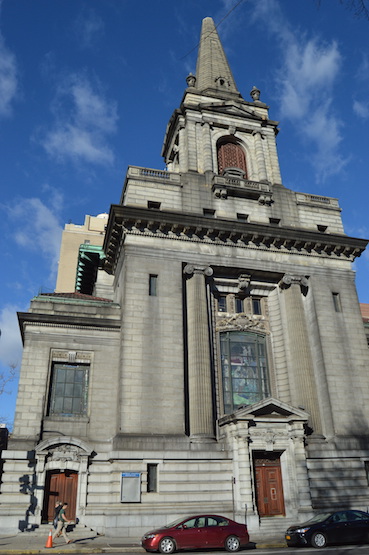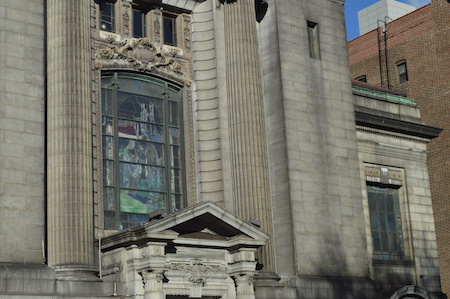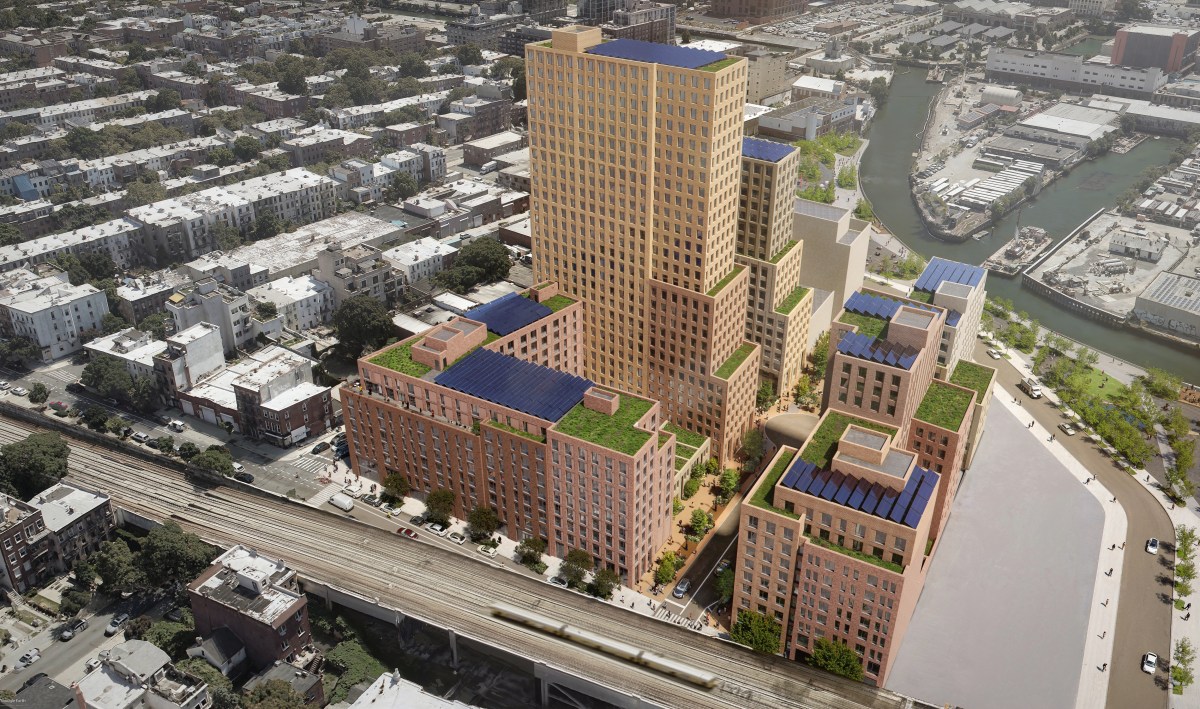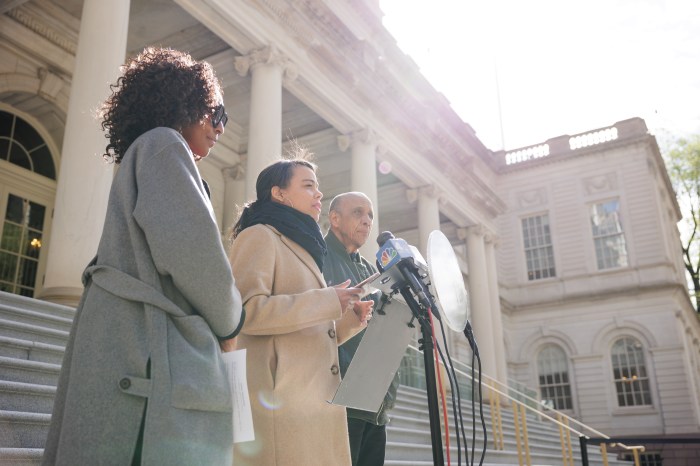
BY JACKSON CHEN | The city’s Board of Standards and Appeals, on March 8, gave a proposal to convert a landmarked church to residential use another chance, a decision that allowed the project’s sponsors to avoid a widely expected negative vote on their application.
The proposal, put forward by developers Ira Shapiro and Joseph Brunner, is to create 35 residential units — down from an earlier envisioned 39 units — and to add several windows and a rooftop penthouse at the former First Church of Christ, Scientist building at 361 Central Park West.
Though the church building, which faces the park at 96th Street, was designated a landmark in July 1974, its interior was unprotected and later gutted. The new plans include the removal of religious iconography from the stained glass windows. In December, the Central Park West Neighbors Association, a leading opponent of the proposal, said that there’s evidence the windows’ creator was Mary Elizabeth Tillinghast, a preeminent female stained glass artist from the late 19th and early 20th centuries.
The church’s residential conversion has drawn widespread scorn from the local community, and the BSA deemed the developers’ proposal an “error-filled application.” The board, however, has now granted Shapiro and Brunner another hearing based on their assertion that there is “new information” to be considered. The delay in the BSA resolving the application has preservationists crying foul and favoritism.
After long drawn-out processes at both the Landmarks Preservation Commission, which approved the plans in March 2015, and the BSA, the developers moved on February 29 to withdraw their application altogether, just days before the meeting where resolution — likely, rejection — was expected.
In their February 29 request, the developers explained they wanted to “reassess the extent of the relief sought by the variance application, and to examine the potential for other uses at the property.”
Late last year, Children’s Museum of Manhattan executive director Andy Ackerman confirmed that the museum had spoken to the developers about acquiring the property but that the parties never reached agreement on the price. More recently, a Crenshaw Christian Center East pastor, Terry Starks, expressed interest in moving a congregation back into the space, according to Susan Simon, a neighbor of the building and a Central Park West Neighbors Association member.

Critics of the project complain that the developers’ effort to withdraw their proposal was calculated to avoid the BSA’s anticipated nixing of the project, a perspective reinforced by comments from BSA staff. Ryan Singer, the board’s executive director, said Shapiro and Brunner were likely “playing the odds” given negative comments that BSA commissioners have made on the record about the proposal as well as the recusal of board chair Margery Perlmutter, which could lead to a tie vote that would be counted as a rejection.
The board, at its March 8 meeting, denied the withdrawal request for those very reasons. However, the commissioners unanimously agreed to reopen a hearing on the proposal, now scheduled for June. On March 1, Curbed reported that Mitchell Korbey, an attorney involved in the project, said the developers had discovered “additional information” about the project that they would submit to the BSA.
Singer said that instances of changed circumstances arising after the record has been closed on applications before the board have occurred in other recent cases, and on some occasions where the BSA has not allowed an applicant to reopen the file developers have taken the board to court. Here, despite board patience wearing thin, the developers have been given another hearing, according to Singer.
Attorney Michael Hiller, who represents the Central Park West Neighbors Association, charged that the reopening of the record in this case is not appropriate and insults the integrity of the BSA process.
“If the developer is attempting to reopen the record by withdrawing the application, wiping the slate clean, and submitting new documents and new information, the better choice would be to reject that effort,” Hiller said.
Landmark West!, a preservationist group on Manhattan’s West Side, echoed Hiller’s comments, saying the developers have been given favorable treatment.
“The board has essentially given the developer a do-over,” said Kate Wood, Landmark West!’s president. “I think the fact that the BSA hasn’t yet thrown out this application, given it’s riddled with all these errors and misrepresentations, that’s a measure of the developer’s power in the city.”
Wood said it was no surprise that the developers knew which way the board planned on voting because applicants work much more closely with the city agencies than public stakeholders are allowed to.
“The public is kept in the dark about all these procedures, where the applicant is given thorough access,” Wood said.
Singer defended the way BSA staff work with applicants, saying it makes for a smoother back-and-forth process in evaluating a proposal. He emphasized that commissioners themselves — as distinct from the board’s staff — never interact with the applicants outside the hearings.
Shapiro and Brunner have until April 26 to submit their additional information to the board, which will determine whether it represents a substantive addition to the record.
Project opponents will then have until May 19 to present their counter arguments before the June 2 hearing.

















